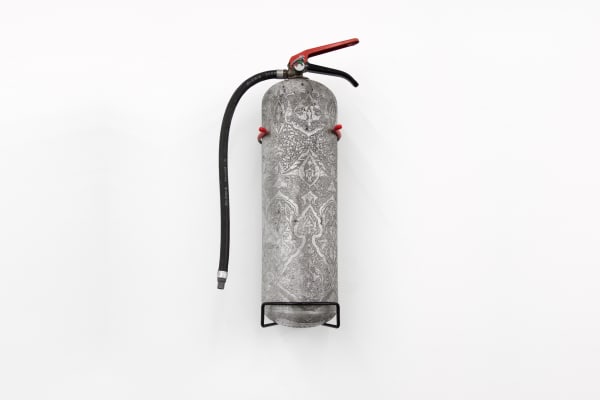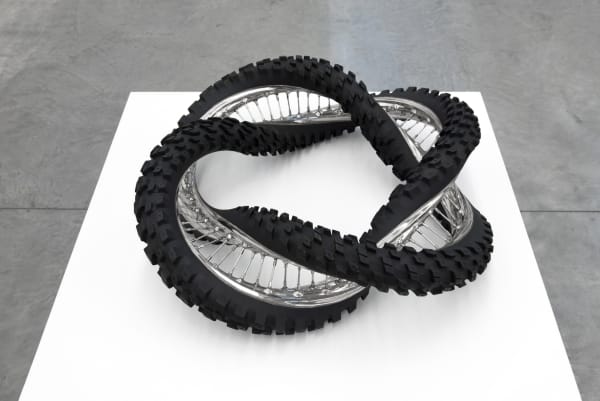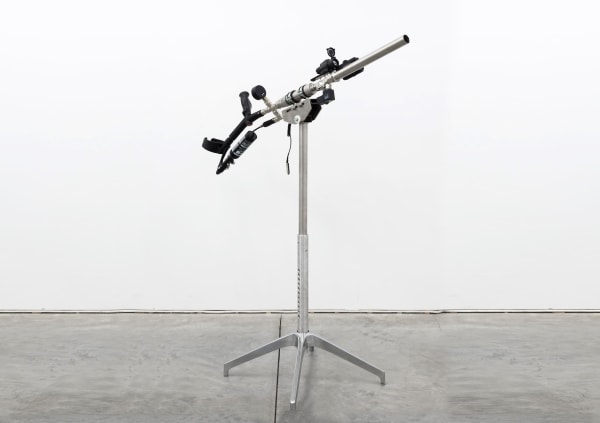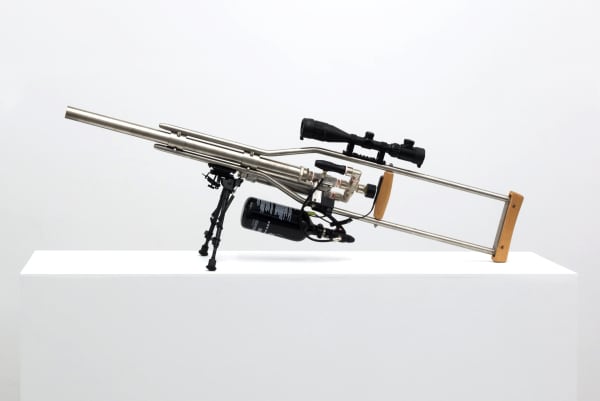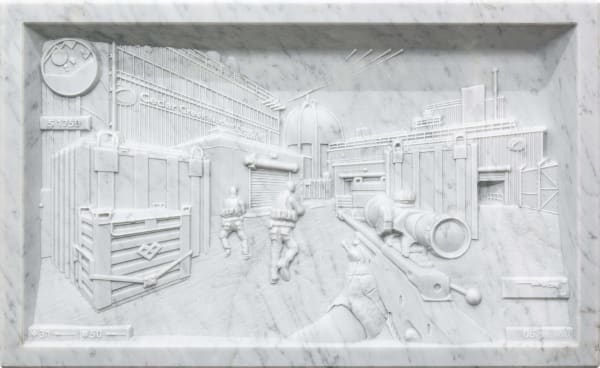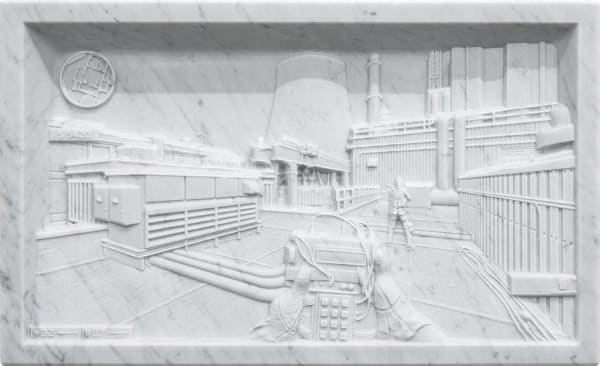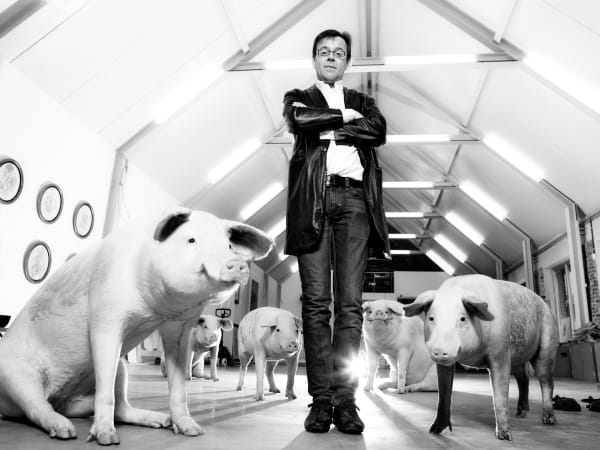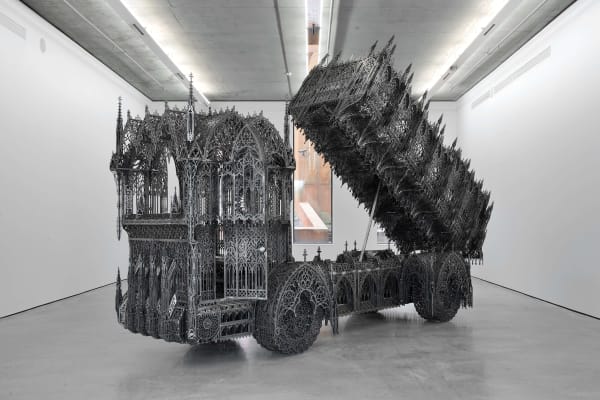Wim Delvoye: Personal Exhibition
-

Wim Delvoye is an artist renowned for his unprecedented experiments in neo-conceptual art. His projects are ironic provocations that combine philosophical depth, unconventional use of materials, and meticulous craftsmanship.
-
Wim Delvoye
DOWNLOAD PRESS RELEASE
CONTACT
 Email
Email
 Serebryanicheskaya Emb., 19, Moscow
Serebryanicheskaya Emb., 19, MoscowDrawing on the history of art — from 19th-century Gothic cathedrals, Hieronymus Bosch and Pieter Bruegel to Andy Warhol’s Pop Art — Delvoye blurs the boundaries between tradition and modernity. He creates mathematically precise, aerodynamic sculptures in which visions of new architecture merge with the subtlety of form and impeccable execution.
-
-
-
Exhibited works
-
 Wim DelvoyeMaserati 450s , 2015Embossed aluminiumL 450 x 180 x H 80 cm
Wim DelvoyeMaserati 450s , 2015Embossed aluminiumL 450 x 180 x H 80 cm -

-
 Wim DelvoyeConcrete Mixer, 2018Laser-cut corten steel98 x 206 x 187.5 cm
Wim DelvoyeConcrete Mixer, 2018Laser-cut corten steel98 x 206 x 187.5 cm -
 Wim DelvoyeExhaust Pipe, 2017Embossed aluminium206 x 56 x 12 cm
Wim DelvoyeExhaust Pipe, 2017Embossed aluminium206 x 56 x 12 cm
-
 Wim DelvoyeFire Extinguisher, 2017Embossed aluminiumH 58 x Ø 13,5 cm
Wim DelvoyeFire Extinguisher, 2017Embossed aluminiumH 58 x Ø 13,5 cm -
 Wim DelvoyeDunlop Geomax 100/90-19 57M 360° 3X, 2013Polished and patinated stainless steel87 x 87 x 34 cm
Wim DelvoyeDunlop Geomax 100/90-19 57M 360° 3X, 2013Polished and patinated stainless steel87 x 87 x 34 cm -
 Wim DelvoyeDunlop Geomax 100/90-19 57M 720° 2X, 2013Polished and patinated stainless steel78 x 79 x 23 cm
Wim DelvoyeDunlop Geomax 100/90-19 57M 720° 2X, 2013Polished and patinated stainless steel78 x 79 x 23 cm
-
 Wim DelvoyeDunlop Geomax 100/90-19 57M120° 3X, 2013Polished and patinated stainless steel
Wim DelvoyeDunlop Geomax 100/90-19 57M120° 3X, 2013Polished and patinated stainless steel
87 x 87 x 27 cm
-
-
-
-
-
-
-
Over the years, Wim Delvoye’s work has been exhibited in major institutions worldwide, including the Guggenheim Collection in Venice, Italy (2009), Musée d’Art Moderne et d’Art Contemporain (MAMAC) in Nice, France (2010), Musée Rodin in Paris, France (2010), Palais des Beaux-Arts (BOZAR) in Brussels, Belgium (2010–2011), the Louvre in Paris, France (2012), the Museum of Old and New Art in Hobart, Australia (2012), the Pushkin State Museum of Fine Arts in Moscow, Russia (2014), the Tehran Museum of Contemporary Art in Iran (2016), and MUDAM in Luxembourg (2016).
-
-
Video
-
Artist
-
-
Explore more






